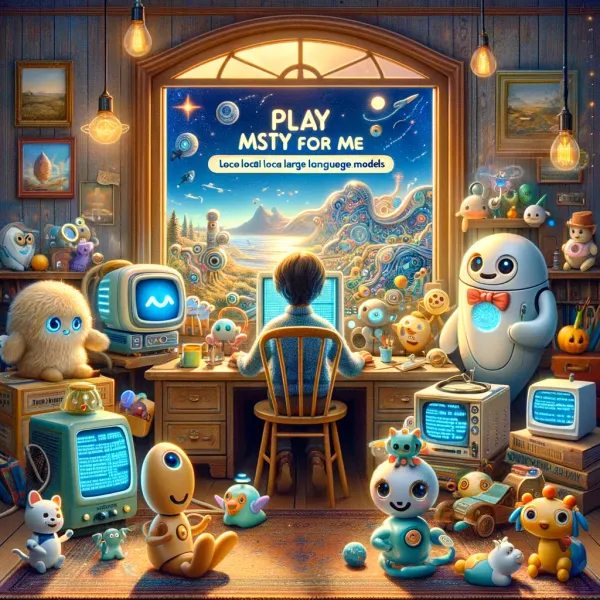Does ❤️ OSS?

Apple's Open Secret: Venturing Into Open-Source Software
Here's something fun that I haven't seen reported elsewhere: In a move that should be raising eyebrows across the tech world, Apple, a titan of industry known for its closely guarded ecosystem, is venturing into, and even publishing, open-source software. But why would a company, synonymous with exclusivity, decide to share its innovations with the world? Let's get into it.
Apple, long perceived as the most impenetrable "walled garden" in tech, has quietly released two groundbreaking papers in machine learning over the past six months. This is a departure from its usual secrecy and marks a pivotal moment in Apple's history. This hints at a broader strategic shift. But first, let's take a look at what Apple has published so far, and how we should think about them today. Apple has released 2 papers on ARVIX. We're going to look at both and summarize what's happening in each. Keep in mind, these papers are extremely technical. I'm intentionally broadening the language for context:
- LLM in a Flash (Nov 2023): Imagine running advanced AI on your current or late-model iPhone, transforming it into a device capable of understanding and interacting in ways previously imaginable only on the latest, most expensive hardware. This is the promise of Apple's first paper, which introduces a method to efficiently run large language models on devices with limited resources by cleverly leveraging flash memory.
- GUIDING INSTRUCTION-BASED IMAGE EDITING (Feb 2024): The second paper takes us into a future where editing photos with the ease of conversing with a friend becomes reality. Through a novel approach called Multimodal Large Language Model-Guided Image Editing, Apple is on the brink of revolutionizing how we manipulate images, making professional-grade edits as simple as describing what you want to change.
Ok, so what do these papers actually mean? Well, first they show Apple's commitment to on-device processing, for one. By expanding the RAM available to LLMs to more device resources, Apple (and anyone) can run more advanced models on lower-end hardware. Of course, Apple has high-end hardware, so we should expect that local models are still pretty state of the art.
Second, they show that Apple, like Google, is thinking about ways to empower their customers to take advantage of these features. At minimum we should expect that the next version of iOS includes features like generating a reply to a text or email. We should also be able to alter photos using only our voice/text. Next year, I imagine you'll be able to tell your iPhone to create a reply to an email or update a photo like it was shot at "magic hour" and it will just work. That's cool for us consumers, but doesn't really get at why, specifically, Apple would be open-sourcing their software.
Why Open Source, and Why Now?
This strategic pivot raises the question: Why would Apple, a bastion of proprietary technology, embrace the open-source model? The answer lies in the changing landscape of tech, where, one hopes, collaboration and transparency are becoming key drivers of innovation and trust. Apple's foray into open-source appears as a strategic move to set new standards, foster innovation, and ensure its products remain at the cutting edge of technology.
Let's look at some possible strategies and benefits:
- Innovation and Collaboration: By sharing its research, Apple invites the global community to build upon its work, potentially leading to breakthroughs that even Apple itself hadn't anticipated.
- Attracting Talent: Engaging with the open-source community positions Apple as a leader not just in product innovation but in technological research, attracting top minds eager to contribute to meaningful, open projects.
- Setting New Standards: Through its contributions, Apple has the opportunity to influence the direction of AI and technology development, ensuring its products and services continue to play a pivotal role in shaping the future of tech.
Speculating on the future, it's clear that Apple's embrace of open-source software for its AI technologies will redefine user experiences. With the potential integration of advanced image editing capabilities and more intuitive AI-driven features in iOS, we're looking at a future where our devices understand us better and cater to our needs in ways we've only begun to imagine.
Interestingly, I do not think the Vision Pro device was imagined with Generative AI in mind. I'm fascinated by this and will be watching how Apple adjusts the roadmap for this device given it's new-found potential. One imagines a device that's taking in real-time data, interpreting it, and deploying the interpretation in near real-time. Now we can have our meetings or do our homework on Mars.
Apple's unexpected pivot to open-source marks the beginning of a new chapter, not just for the company but for the entire tech industry. By blending its reputation for innovation with a newfound commitment to openness and collaboration, Apple is not just breaking down its own walls—it's inviting us all to imagine and build a future where technology is more personal, accessible, and interconnected than ever before.
So, does Apple love open source software? Of course, no company feels emotion and Apple's posture towards developers and open-source is accurately described to-date as hostile. Nothing here changes that. Apple is making a strategy play, but I don't see where they are upholding the values of open-source.




